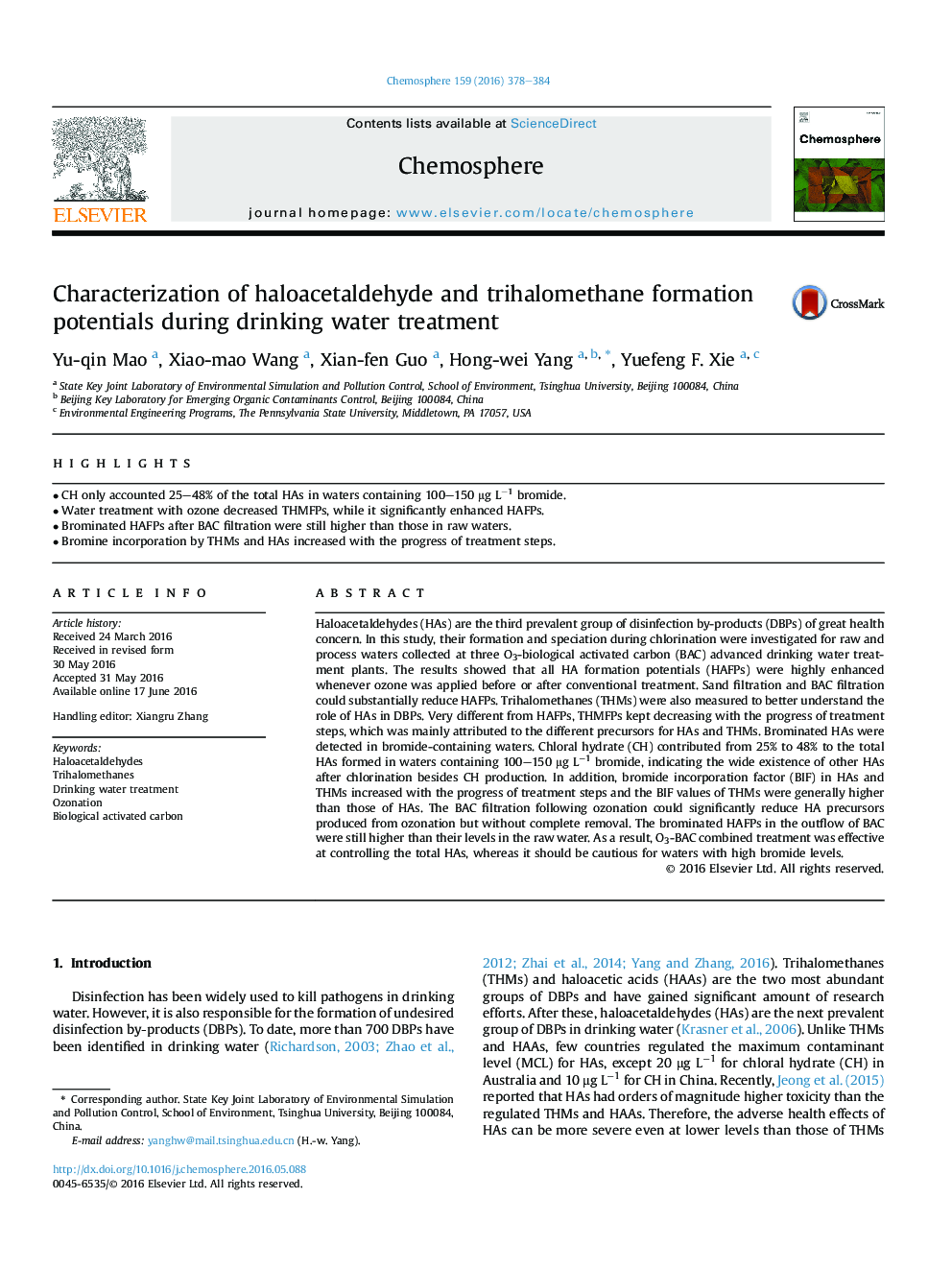| کد مقاله | کد نشریه | سال انتشار | مقاله انگلیسی | نسخه تمام متن |
|---|---|---|---|---|
| 4407472 | 1618812 | 2016 | 7 صفحه PDF | دانلود رایگان |
• CH only accounted 25–48% of the total HAs in waters containing 100–150 μg L−1 bromide.
• Water treatment with ozone decreased THMFPs, while it significantly enhanced HAFPs.
• Brominated HAFPs after BAC filtration were still higher than those in raw waters.
• Bromine incorporation by THMs and HAs increased with the progress of treatment steps.
Haloacetaldehydes (HAs) are the third prevalent group of disinfection by-products (DBPs) of great health concern. In this study, their formation and speciation during chlorination were investigated for raw and process waters collected at three O3-biological activated carbon (BAC) advanced drinking water treatment plants. The results showed that all HA formation potentials (HAFPs) were highly enhanced whenever ozone was applied before or after conventional treatment. Sand filtration and BAC filtration could substantially reduce HAFPs. Trihalomethanes (THMs) were also measured to better understand the role of HAs in DBPs. Very different from HAFPs, THMFPs kept decreasing with the progress of treatment steps, which was mainly attributed to the different precursors for HAs and THMs. Brominated HAs were detected in bromide-containing waters. Chloral hydrate (CH) contributed from 25% to 48% to the total HAs formed in waters containing 100–150 μg L−1 bromide, indicating the wide existence of other HAs after chlorination besides CH production. In addition, bromide incorporation factor (BIF) in HAs and THMs increased with the progress of treatment steps and the BIF values of THMs were generally higher than those of HAs. The BAC filtration following ozonation could significantly reduce HA precursors produced from ozonation but without complete removal. The brominated HAFPs in the outflow of BAC were still higher than their levels in the raw water. As a result, O3-BAC combined treatment was effective at controlling the total HAs, whereas it should be cautious for waters with high bromide levels.
Journal: Chemosphere - Volume 159, September 2016, Pages 378–384
